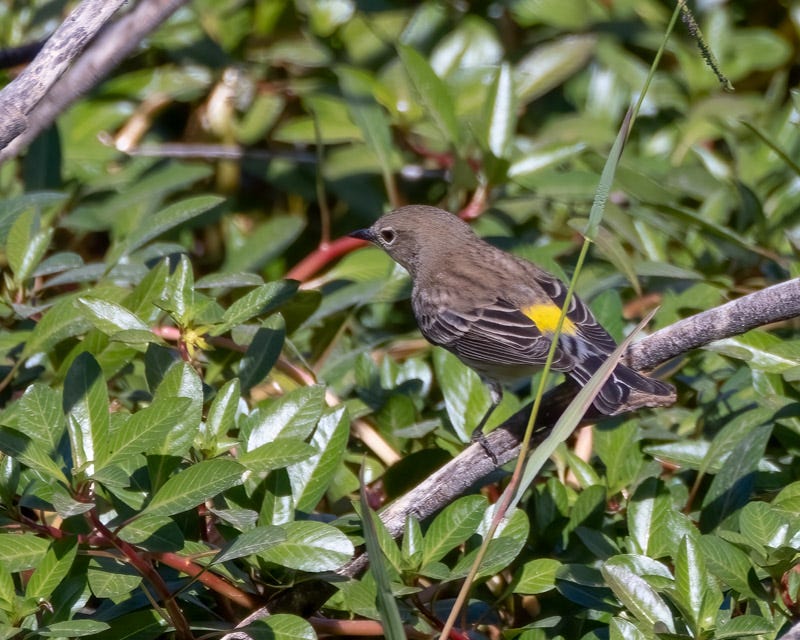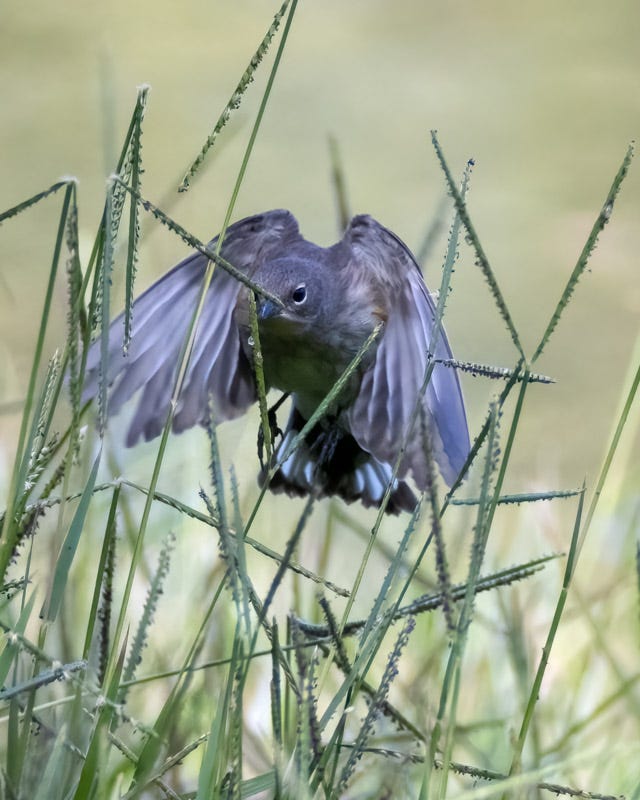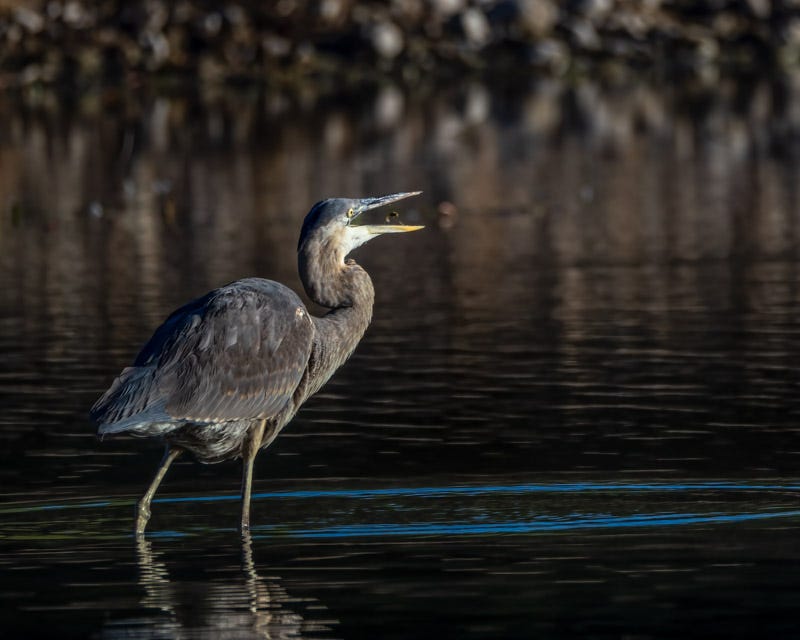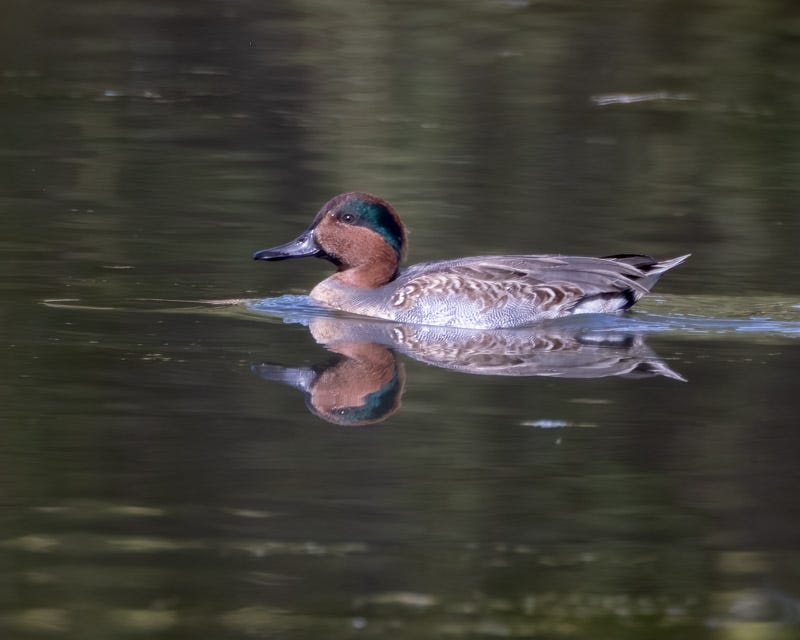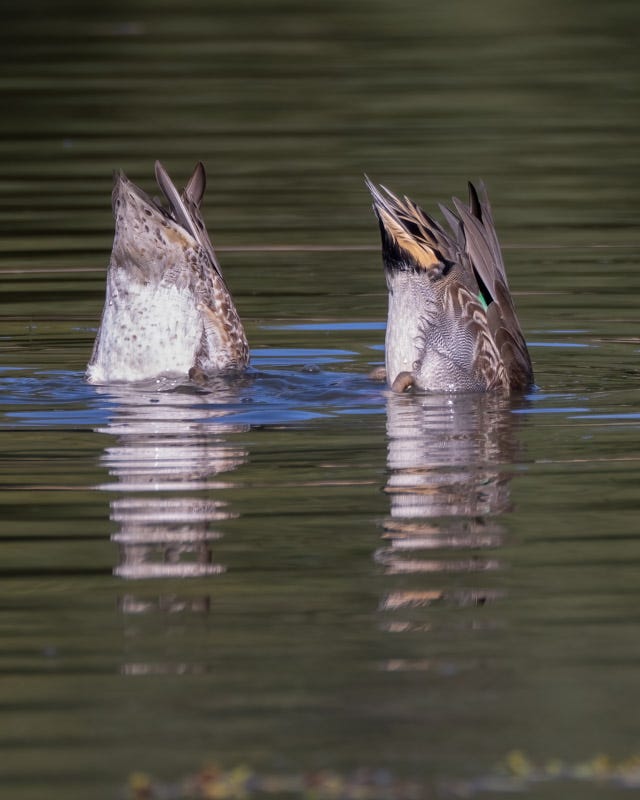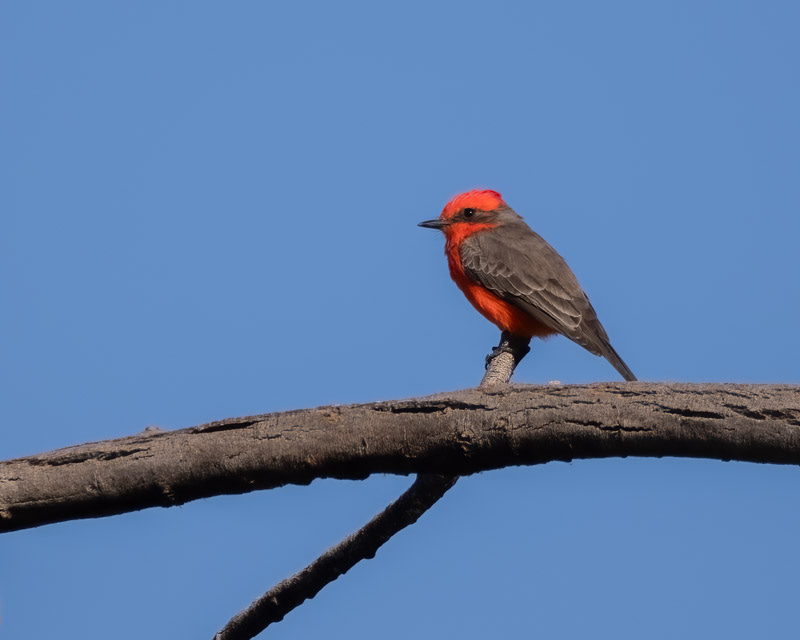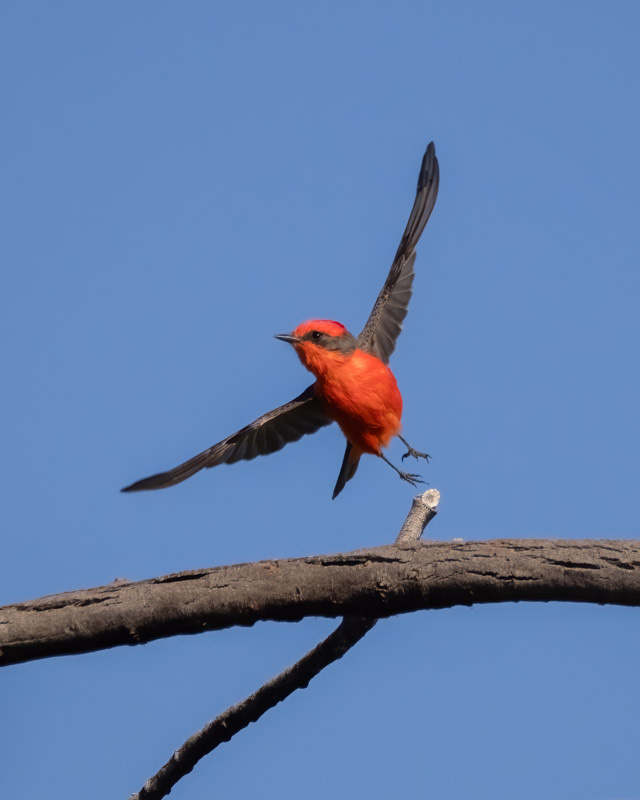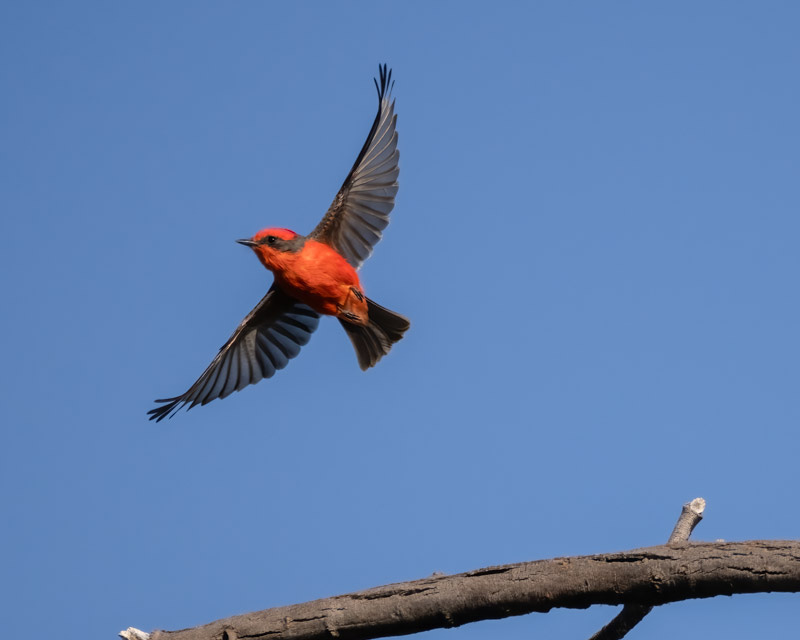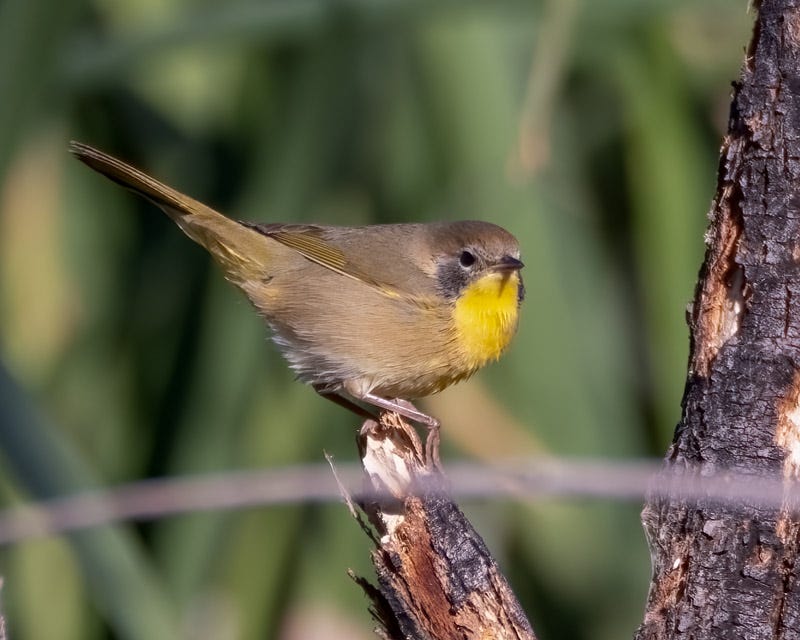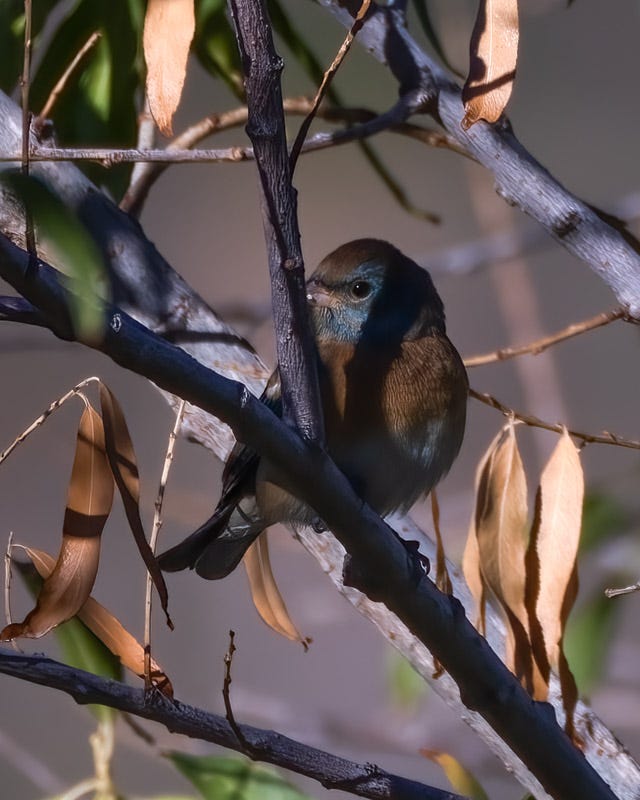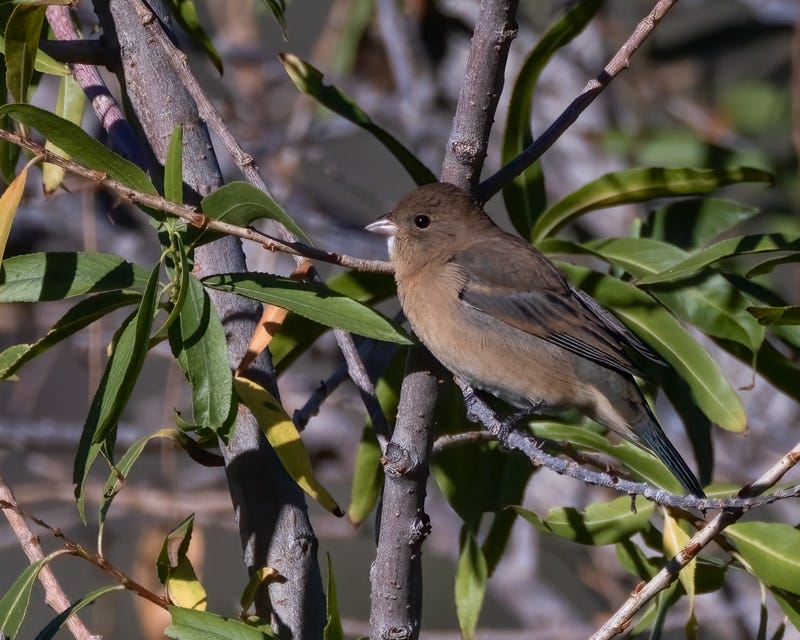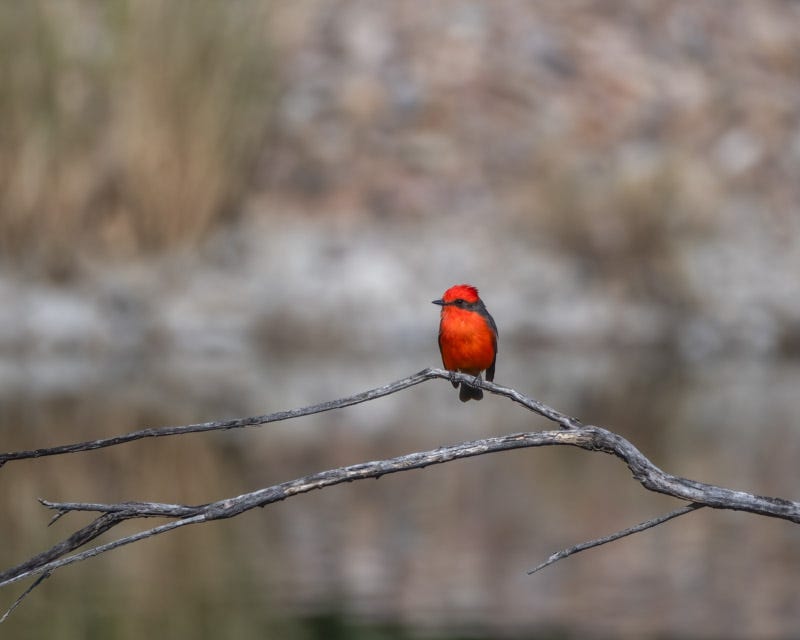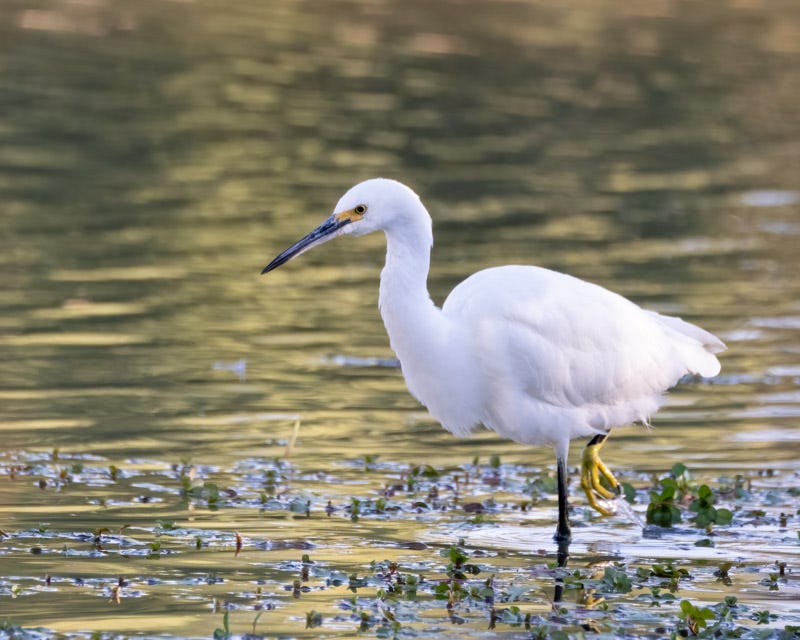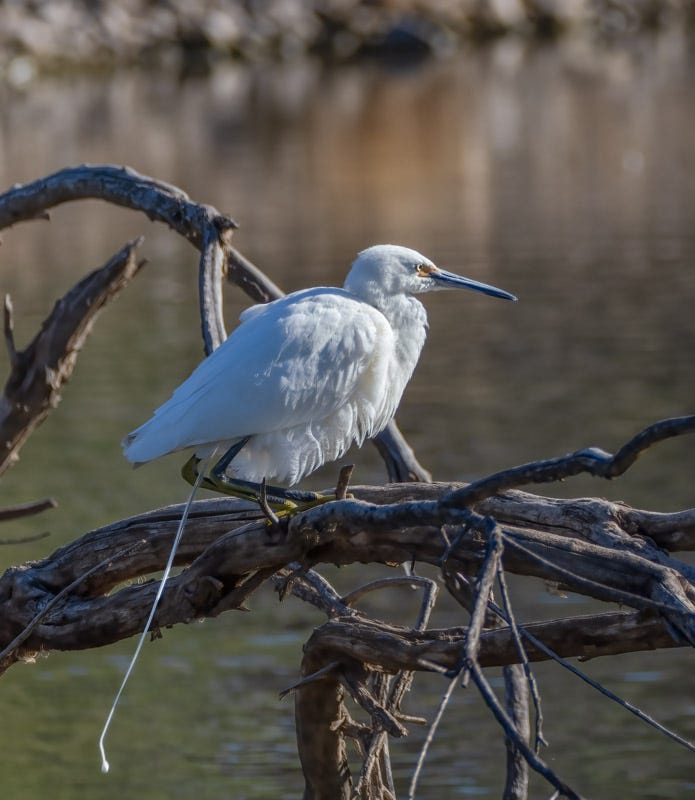El Rio Birds with Colors in Their Names
Nov. 11, 2024: Here's a "colorful" post from the El Rio Preserve
Yellow-rumped Warblers are in southern Arizona year-round, but they spend their summer months at higher elevations and not in the Tucson desert valley. During winter, they descend to the desert and are joined by very many Yellow-rumped Warblers from northern states who migrate south for the winter. You can see how they got their name!
I was intrigued by a number of Yellow-rumps which would occasionally come to a tree branch next to a patch of Bermuda Grass, and then flutter over the grass. I hadn't seen that behavior before. I assumed they were plucking seeds from the grasses but upon closer inspection of my photos, saw that they were gleaning little glossy white eggs of some insect from the grasses. Look closely for those small shiny white 'drops' on the grasses. I can send you a larger version of this photo if you wish.
There was an immature Great Blue Heron on the lake feeding in the shallow eastern end. Although the word "blue" is in their name, and they are described as being "blue-gray" as seen from a distance, I don't see much of a blue hue. Still, with a bird this big, I'm not going to argue if it insists on being called a Great BLUE Heron.
Many wintering ducks have arrived in southern Arizona including some Green-winged Teals. Teals are small ducks and the male Green-Winged Teal has a cinnamon head and a green "swoop" or "crescent" from its eye to the back of its head. The green wing match remains hidden while the teal is swimming. Birdnote talks about this special bird: https://www.birdnote.org/podcasts/birdnote-daily/green-winged-teal-millions
Green-winged Teals have green wing patches on their secondary flight feathers. That green is usually hidden when the ducks are swimming and can be seen in flight. Below, is a female (left) and male (on the right) Green-winged Teal feeding with behavior called 'dabbling'. They tip their rear ends up and reach down as far as they can without going all the way under water to reach for food. In this position, a tiny bit of the male's green wing patch has become visible.
Vermilion Flycatchers seemed to be all around the El Rio Preserve. They were catching insects on or just above the water. "Vermilion" means a deep bright shade of red. https://tinyurl.com/4uxtmxfv
Birdnote tells us more about this spectacular looking bird https://www.birdnote.org/podcasts/birdnote-daily/vermilion-flycatcher I never get tired of watching Vermilion Flycatchers perched and then watching them take off to grab an insect in the air.
These birds are as skilled as hunters as they are good looking to see.
Common Yellowthroats are small songbirds. They are seen (or more often heard) during our winters on the edges of wetlands. The adult males have a striking black mask but this immature male just has a black splotch underneath his eye. By the end of this winter he will look like a typical adult. You can hear the Yellow-throat's distinct call at Birdnote: https://www.birdnote.org/podcasts/birdnote-daily/common-yellowthroat
Another pair of wintering birds passed through the thick brush at El Rio. These Lazuli Buntings are the first I've seen this winter. The male, deep in the shade, shows the mottled blue head of a non-breeding season Lazuli Bunting. The name Lazuli comes from a semi-precious stone that has a deep blue color. During the spring-time breeding season, Lazuli Bunting males have a brilliant blue head and neck.
The female Lazuli Buntings are a grayish brown with a tinge of blue to their wings and tail.
I can't get enough of Vermilion Flycatchers. Even at a distance, their color is unmistakable.
The final bird with a color name in this email is the Snowy Egret. This snowy-white bird is smaller than the Great Blue Heron and the Great Egret that are present at El Rio. The Snowy Egrets have black bills, unlike the yellow bill of a Great Egret. At the end of their black legs, they have yellow feet.
You might recognize this 'stick' island from my last El Rio email. In that email, the Great Blue Heron was perched on it one hot afternoon. On this day, a Snowy Egret spent a while on the same spot. As it got ready to fly off, it "lightened its load". That, alone, is rather a colorful ending to this email.


